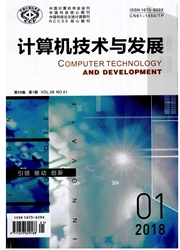

 中文摘要:
中文摘要:
随着网络技术的发展、网络普及率的提高和网络规模的不断增大,网络能量消耗在社会总能量消耗中的比率已引起了社会的广泛关注,控制网络能耗以降低网络运营成本已刻不容缓。为此,网络节能技术已成为当今的研究热点之一。由于技术等多种原因,难以在根本上解决传统网络能耗过大的问题。为此,需要采用新技术、新观念设计革命性的未来网络架构,并在此网络架构下,探索包括休眠机制在内的网络能耗控制技术。在介绍两种未来网络架构OpenFlow和DTN的基础上,着眼于未来网络新架构内休眠机制的研究进展,着重阐述了OpenFlow架构下的节点与链路休眠机制,以及DTN架构下情景感知和异步时钟等休眠机制,分析了网络休眠机制研究中面临的问题与困难,并且给出了未来网络休眠研究的建议。
 英文摘要:
英文摘要:
Due to development of network technology, improvement of Internet popularity and increasing scale of network, ratio of net- work energy consumption in total energy consumption has caused high attention in the society, and it is imperative that network energy consumption be managed to lower operating cost. Therefore, the technique for network energy saving is one of most popular issues under investigation nowadays. Because of various reasons involving technical cause, it is very hard to solve the problem of excessive energy con- sumption of traditional network fundamentally. Thus, new techniques, revolutionary concepts and new designs are required to construct fu- ture network architectures, under which technical explorations of network energy consumption control include that of sleep mechanism. On the basis of general introductions on both future network architectures of OpenFlow and DTN, with an eye to the progress on the investi- gations of dormancy mechanism under new framework of future network, various mechanisms, such as node and link dormancy mecha- nism under OpenFlow framework, situational awareness and asynchronous clock sleep mechanism in DTN architecture, have been expoun- ded emphatically. Analysis on the problems and difficulties encountered in above investigations have been presented as well as future directions for network dormancy investigations.
 同期刊论文项目
同期刊论文项目
 同项目期刊论文
同项目期刊论文
 期刊信息
期刊信息
